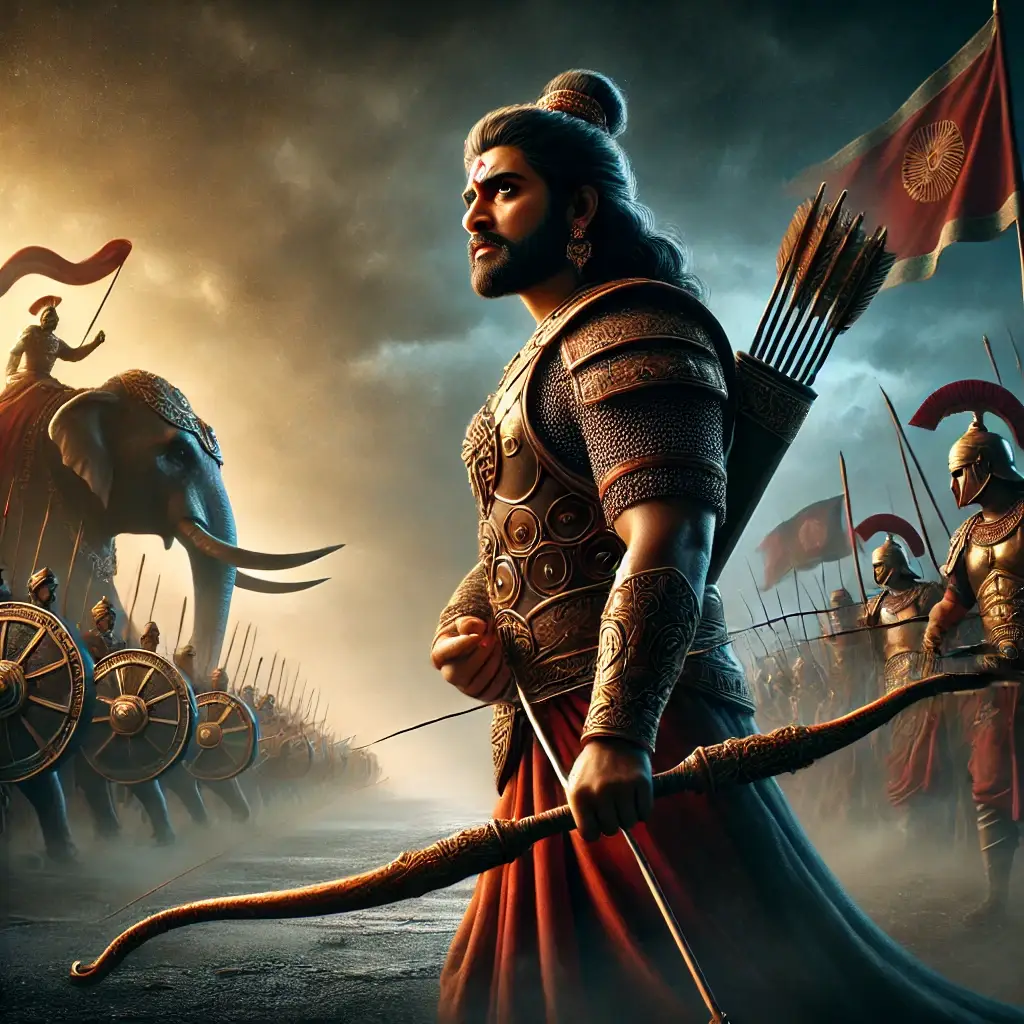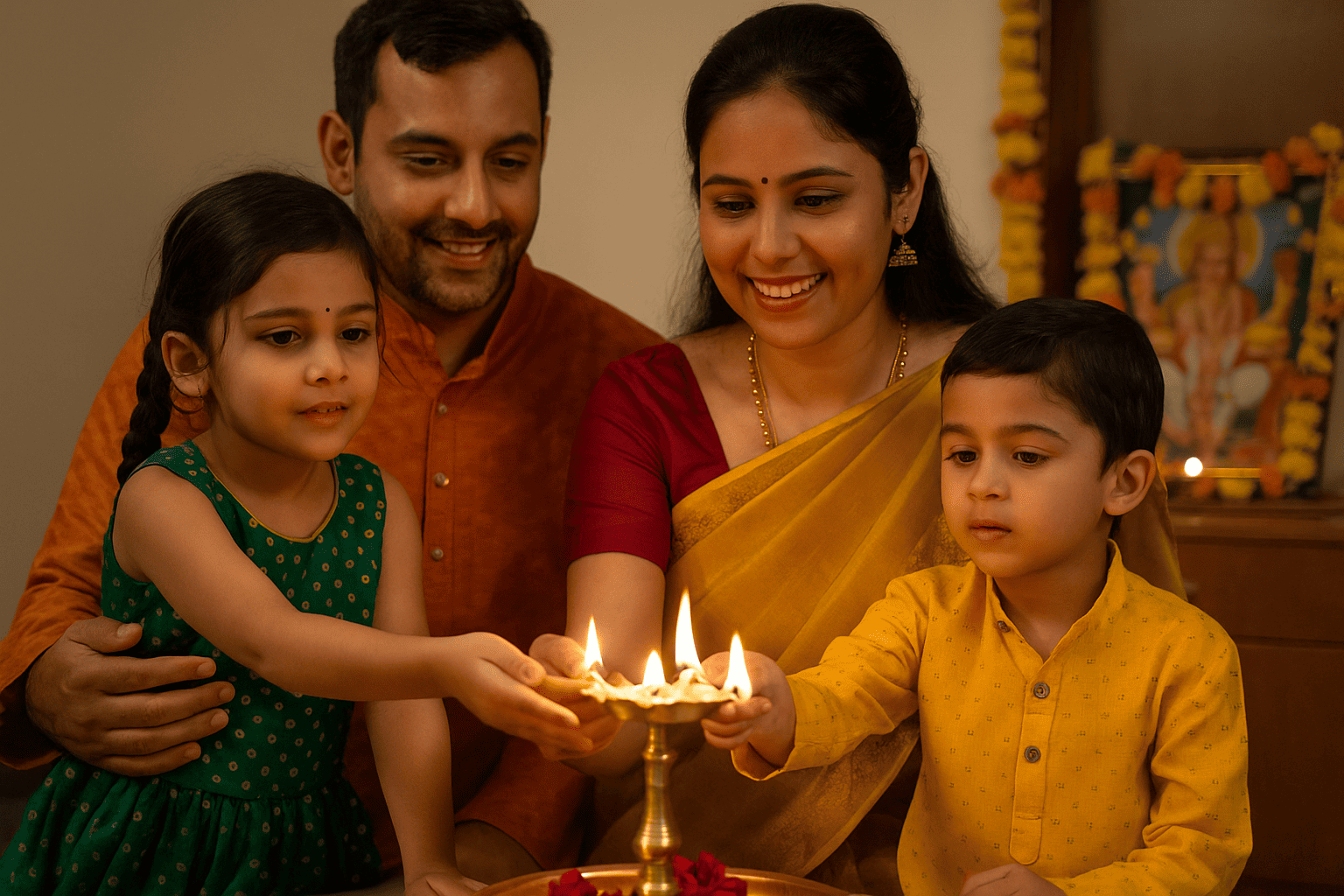

— Arjuna Vishada Yoga: The Yoga of Arjuna’s Despondency
Chapter 1 of the Bhagavad Gita opens not with action, but with a pause. Titled Arjuna Vishada Yoga, it takes place on the battlefield of Kurukshetra, where two great armies prepare to fight. Amid the rising tension, Arjuna—the warrior prince—lays down his bow. Overwhelmed by confusion, sorrow, and moral doubt, he tells Lord Krishna, his charioteer and guide, “I will not fight.”
Rather than being a moment of weakness, Arjuna’s crisis is what triggers the entire spiritual discourse of the Gita. His vulnerability becomes the doorway to divine wisdom.
Here are five key lessons from Chapter 1, along with practical ways we can live them today.
1. Even the Strongest Can Break Down—And That’s Okay
Arjuna is a mighty warrior, trained in the art of war, known for his valor. But when he sees his own relatives, teachers, and friends on both sides of the battlefield, he breaks down emotionally.
Verse 28–29: “My limbs give way, my mouth is dry, my body trembles, and my skin burns. I am unable to stand.”
Lesson: Emotional overwhelm is part of being human. Strength isn’t about never falling—it’s about being honest with your struggle. Whether you’re a parent, leader, student, or healer—it’s okay to pause, question, and feel lost. Vulnerability can be the gateway to clarity.
2. Moral Dilemmas Are Part of Growth
Arjuna’s breakdown is not just emotional—it’s ethical. He doesn’t want to harm loved ones, even though duty calls for it. He is torn between personal love and professional responsibility.
Verse 31: “I do not see any good in killing my own people in battle.”
Lesson: Life often presents us with conflicting duties—career vs. family, truth vs. harmony, ambition vs. compassion. Instead of rushing into decisions, take time to reflect. Confusion is not weakness—it’s the beginning of deeper wisdom.
3. Pausing Before Acting Is a Sign of Wisdom, Not Cowardice
Rather than rushing into battle, Arjuna takes a step back. He lowers his weapon and begins to question everything he thought he knew.
Verse 47: “Arjuna sat down on the chariot, his mind overwhelmed with sorrow.”
Lesson: In a fast-paced world, we’re taught to keep moving. But sometimes, the wisest thing is to pause. When you feel misaligned—don’t push through blindly. Sit, breathe, and listen to your inner voice. Growth often begins in stillness.
4. Facing Inner Conflict Is the First Step Toward Transformation
Arjuna’s despair may seem like a low point—but it’s actually the beginning of his spiritual journey. His confusion leads him to surrender his ego and seek guidance from Krishna in the next chapter.
Lesson: Don’t avoid your doubts, fears, or guilt. Facing your inner mess is the first step toward healing. As painful as it feels, that discomfort can become a portal to a more authentic you.
5. You Don’t Have to Figure Everything Out Alone
Though Arjuna is a skilled warrior, in this moment he realizes that his intellect and strength aren’t enough. He needs help. That’s when Krishna begins to guide him—not just as a friend, but as the voice of higher wisdom.
Lesson: There will be times when you hit a wall. In those moments, don’t hesitate to ask for help—from a mentor, friend, or spiritual source. You don’t have to fight every battle alone. Sometimes, guidance is waiting—but it starts with surrender.
Final Thoughts
Chapter 1 of the Bhagavad Gita is not about action—it’s about hesitation. It teaches that inner battles precede outer clarity. Arjuna’s tears don’t make him weak—they make him real. And in being real, he becomes ready.
“He who sees his own weakness clearly is already on the path to strength“
So when life overwhelms you, remember:







